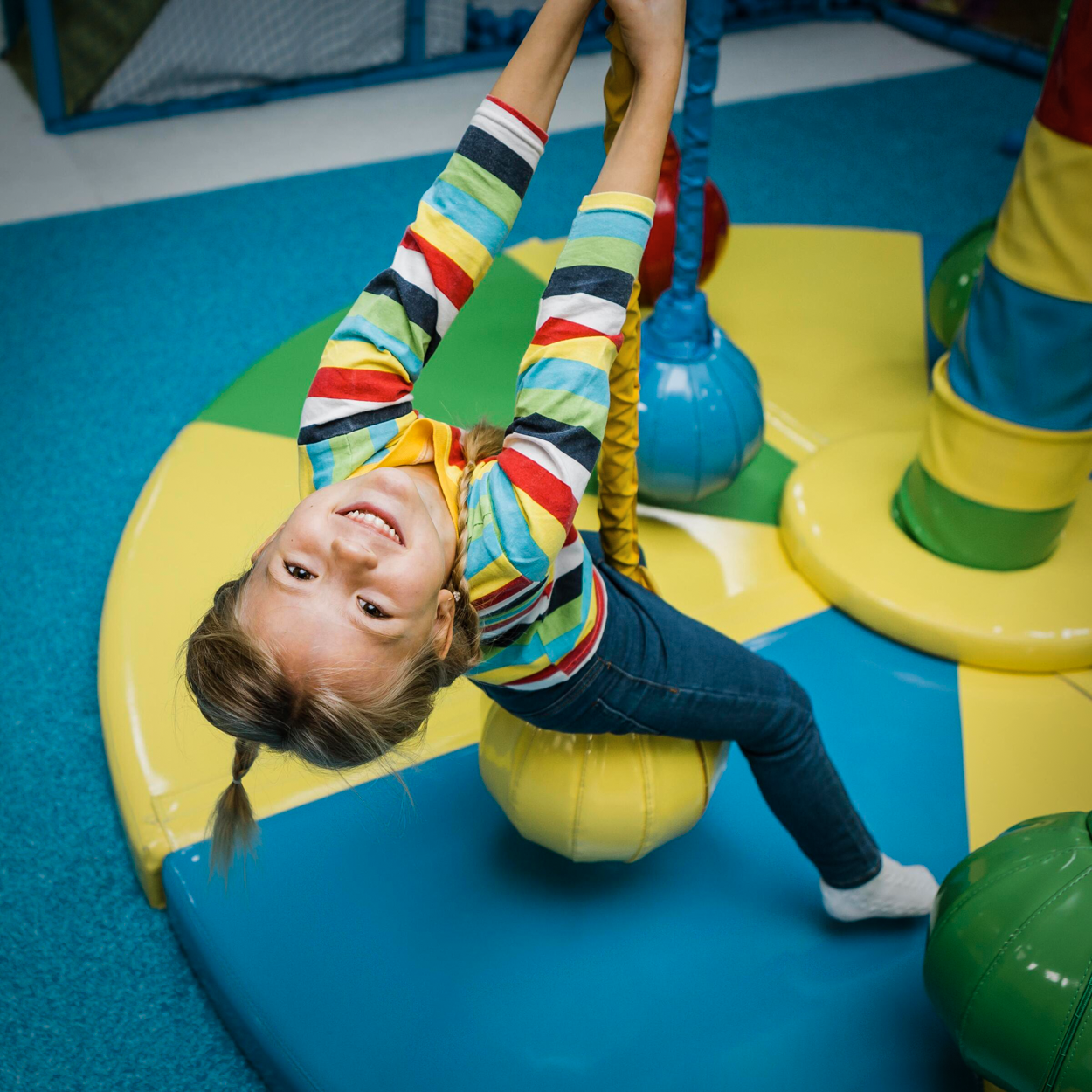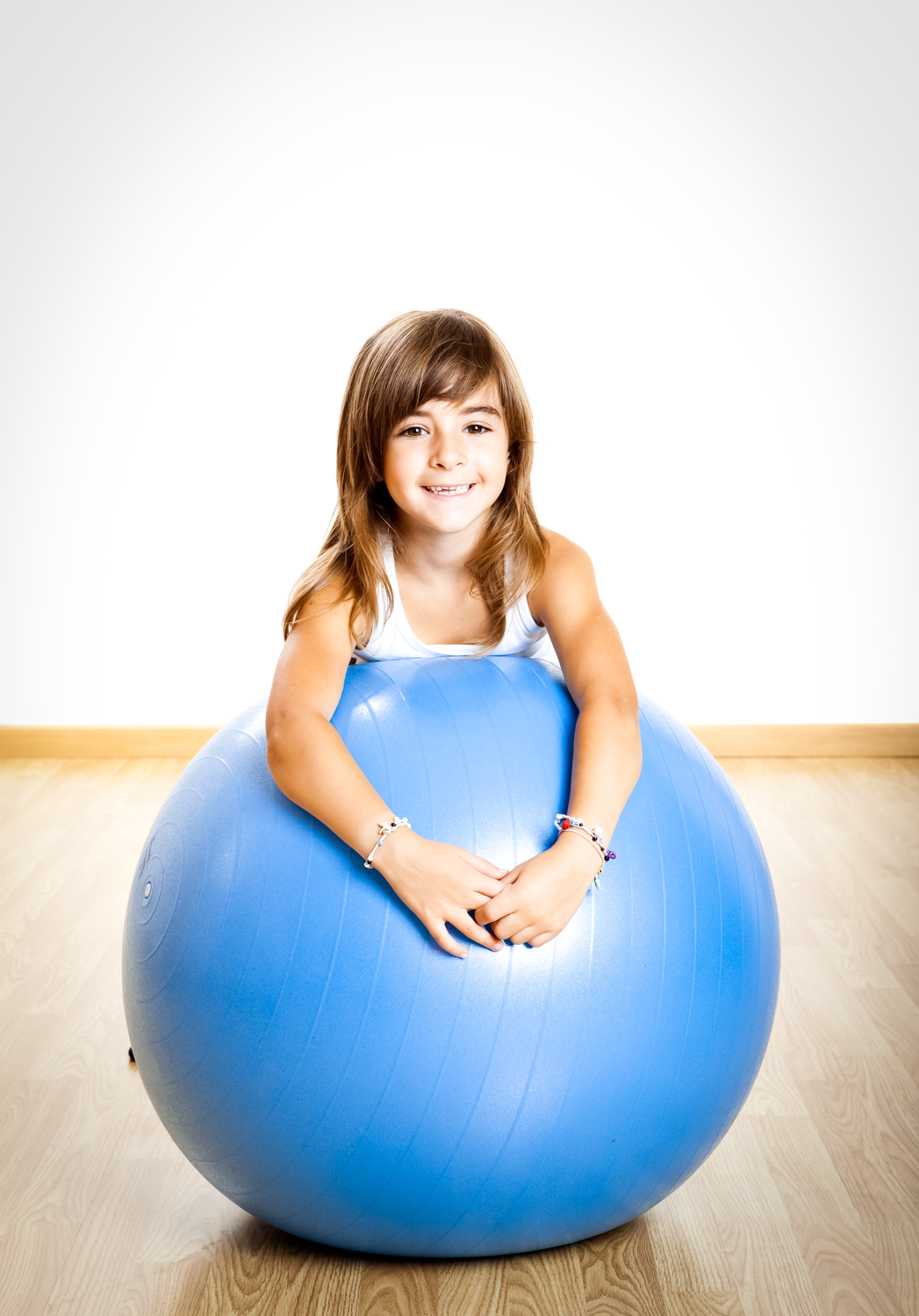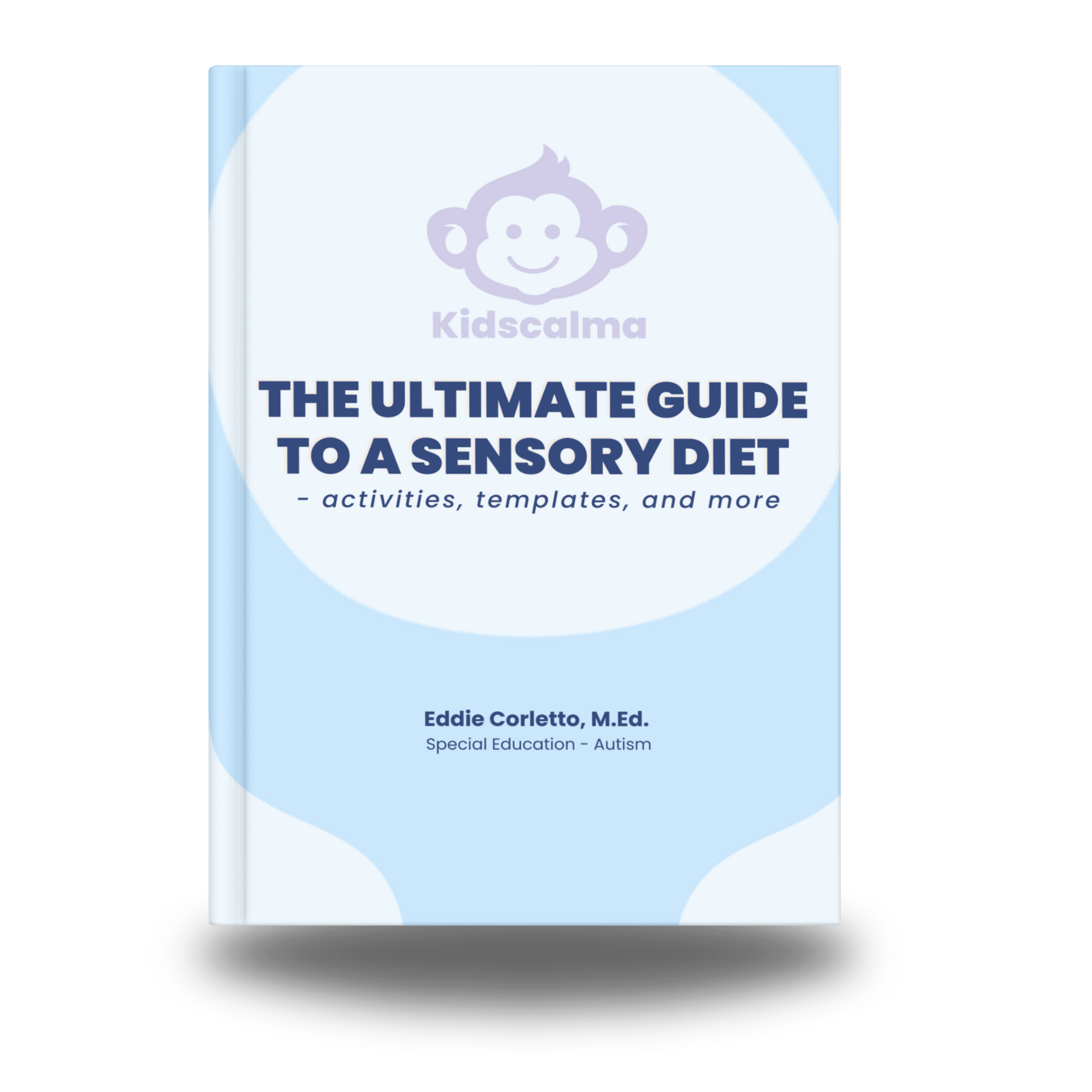Sensory Diet : Activities, Templates, and Practical Tips

Let's talk about what is Sensory Processing Disorder
Understanding Sensory Processing Disorder (SPD), previously known as Sensory Integration Dysfunction, opens our eyes to a unique neurological condition. This condition affects how the brain processes sensory information, leading to a series of challenges. These challenges may include: 1) body awareness; 2) the mastery of fine motor skills; 3) motor control; 4) engaging in social interactions; 5) regulating emotions; and 6) overall behavior. Notably, these sensory processing difficulties can pave the way for developmental delays, predominantly observed in autistic children’s disorders (ASD). However, it is worth noting that SPD doesn’t exclusively affect children with Autism; it can also impact those without Autism.
Addressing the complexities of sensory processing is important. A tailored sensory diet offers a structured approach to help children navigate their sensory world more comfortably by addressing their sensory processing issues through a child’s sensory diet.
Imagine a child grappling with SPD; their world is a whirlwind of sensory challenges. Processing information from their senses can become an overwhelming task, leading to sensory overload. This overload can significantly impact your kiddo’s ability to simply enjoy a meal in the cafeteria, or participate in a game during recess. Picture a child who recoils at the touch of certain food textures, or the fabric of their clothes. Environments that many find stimulating, like a bustling gym or a lively restaurant, become no-go zones due to the overpowering noise. Even the classroom, a place of learning and growth, can become a space of discomfort, with the flickering lights feeling like a constant visual assault.
A child’s sensory diet can help manage sensory processing issues by providing alternative activities and sensory input tailored to their needs. A clear understanding of SPD highlights the need for compassionate and knowledgeable support to help these children succeed in their sensory experiences.

Eight sensory systems
Exploring the human body’s senses shows there are eight, not just the five that are commonly known. Beyond the familiar auditory, visual, tactile, olfactory, and gustatory senses, our bodies navigate and interpret the world with three additional internal senses. These senses are the proprioceptive, vestibular, and the interoceptive senses. This intricate network collaborates seamlessly, gathering a continuous stream of information from our surroundings. The data collected is then relayed to the brain, which meticulously processes and generates a responds to stimuli. It’s through this sophisticated sensory orchestra that we engage with, understand, and respond to our immediate environment. The sensory system plays a crucial role in processing sensory information, regulating behaviors, and impacting daily activities.
Auditory system
This system enables us to hear and process sounds through our ears.
Visual sense
It detects light through the eyes and ends with the brain’s visual interpretation
Tactile sense
This system allows us to feel textures, pressure, temperature, and pain through receptors in the skin.
Olfactory system
This system allows us to smell and detect odors through the nose.
Gustatory system
This system allows us to taste different flavors through taste buds on the tongue.
Proprioceptive sense (a hidden sense)
This system provides a sense of body position and movement through receptors in the muscles, tendons, and joints.
Vestibular sense
This sense is located in the inner ear. It provides the brain with information about motion, spatial orientation, and it helps us maintain balance.
Interoceptive sense
This is the least known of the eight senses. It tells us when we are hungry, full, thirsty, and when we need to go to the bathroom.
How kids with SPD respond to sensory stimuli
Hypersensitivity responds to stimuli
Think of hypersensitivity, or sensory over-responsivity, as the body’s volume knob turned way up high. Simple things, like the buzz of fluorescent lights, the air conditioning, or the texture of a wool sweater, can feel overwhelming. It’s as if every sense is on high alert, making ordinary environments seem like sensory obstacle courses. For our kiddos, this heightened state can lead to feelings of distress or being overwhelmed.
Hyposensitivity responds to stimuli
On the flip side, let’s chat about hyposensitivity, or what you might call sensory under-responsivity. Picture this as the body’s volume knob turned way down low. For our kiddos with hyposensitivity, sensations like pain or changes in temperature might not register in the way we’d expect. They might not notice a scrape on the knee or realize they’re getting too hot or too cold.
But that’s not all. When it comes to managing their sensory world, some children with Sensory Processing Disorder (SPD) find it tricky to find that “just right” response. Imagine trying to adjust a pair of binoculars. For these kiddos, it’s like the focus is always a bit off—they might zoom in too much on a minor sensation or not enough.
Sensory processing challenges
Autistic individuals typically encounter a range of Sensory Processing Disorder (SPD) challenges varying by individual. Some of the most common challenges are:
Oversensitivity to light, sound, or touch
Imagine a world where the ordinary becomes extraordinary, where the flicker of a light, the hum of a conversation, or the texture of a cotton shirt feels amplified. For our little adventurers with SPD, these sensations can transform everyday activities into daunting tasks, making school or playdates seem like navigating a maze. Sensory processing issues can significantly impact daily activities, making it essential to address these challenges effectively.
Difficulty with motor coordination and balance
Imagine trying to balance on a beam in a bustling playground, or the frustration of threading a needle when your hands won’t cooperate. This is the reality for children facing motor coordination and balance challenges. Simple actions like running or cutting paper can feel like climbing a mountain, adding layers of complexity to their daily lives.
Problems with social interaction and communication:
Our kiddos may find themselves at sea without a compass. Interpreting the silent language of social cues can feel like deciphering an unknown code. This barrier can shadow their journey with misunderstandings and missed connections, making the quest for friendship and academic success even more challenging.
Difficulty paying attention and focusing:
In the classroom, the battle for focus and attention wages on. Distractions are everywhere making it very hard to follow a lesson. This struggle extends beyond academics, coloring their world with frustration and limiting their exploration and growth.
Emotional regulation:
Emotional regulation can seem like a rollercoaster of emotions, from meltdowns to moments of intense joy, making the transition between activities a bit tricky.
Behavioral challenges:
SPD can also manifest as a blend of impulsive, aggressive, and repetitive behaviors.
These behaviors, often misunderstood, are simply attempts to navigate their sensory world.

Creating a sensory diet: the ingredients
Step 1: conduct a comprehensive assessment
Pediatric occupational therapist can administer standardized test to evaluate your child’s sensory processing abilities. Formal testing administered by occupational therapists will help identify your child’s patterns of sensory preferences, aversions, and difficulties. This assessment is crucial for creating a child’s sensory diet tailored to their specific needs and preferences.
Observations and detailed note-taking are key to a comprehensive assessment. Observe your child in different environments, such as at home and in school. Note their responses to various sensory stimuli and document behaviors indicating sensory seeking, avoiding, or sensitivity.
Gather detailed information from your child’s caregivers, teachers, about sensory preferences, routines, and the impact of sensory issues on daily life.
Step 2: develop a sensory profile
Compile the assessment data into a comprehensive sensory profile that outlines the individual’s sensory processing patterns, preferences, aversions, and specific needs. Understanding the sensory system helps in developing a sensory profile by providing insights into how sensory information is processed and regulated.
Identify areas of sensory over-responsiveness, under-responsiveness, and sensory-seeking behaviors.
Step 3: set goals
Once you complete the sensory profile, define specific, measurable goals for the sensory diet. Such goals may be improving focus, reducing sensory overload, enhancing self-regulation, or increasing participation in daily activities. Sensory strategies can help achieve these goals by providing structured and customized sensory activities that address sensory processing issues and promote overall well-being.
Step 4: select sensory activities
- Choose a variety of activities that provide the necessary sensory input to meet your child’s needs, targeting different sensory systems:
- Proprioceptive activities (e.g., carrying weighted objects, wall push-ups)
- Vestibular activities (e.g., swinging, spinning, jumping)
- Tactile activities (e.g., sensory bins, textured materials)
- Oral sensory activities (e.g., chewing gum, blowing bubbles)
- Auditory activities (e.g., calming music, white noise)
- Visual activities (e.g., visual tracking, colorful lights)
- Provide a balance of activities that provide calming, alerting, and organizing sensory input.
- Sensory diet activities should be tailored to your child’s age, arousal level, and environment. It is crucial to collaborate with an occupational therapist to make sure these activities meet the specific sensory needs effectively. Sensory diets include a variety of activities designed to meet individual needs through assessment, trial, and analysis.
Step 5: create a schedule
Plan when and how often each activity in the sensory diet will be performed throughout the day. Integrating them into your kiddo’s daily routine (e.g., before school, during breaks, before challenging tasks) is an essential step to create a sensory diet.
Consider your child’s energy levels, attention span, and sensory needs at different times of the day
Step 6: implement and track
Introduce the sensory diet gradually, allowing your loved ones to become accustomed to new activities.
Observe and document your child’s responses to the activities, noting changes in behavior, focus, or emotional regulation.
Adjust activities, duration, and frequency as needed based on your child’s responses and feedback. Sensory diets should be monitored and adjusted regularly, consulting with Occupational Therapists to ensure the strategies are effective.
Step 7: Engage and educate others
- Teach caregivers, teachers, and other relevant individuals how to implement the sensory diet consistently across different environments. Sensory strategies should be consistently implemented across different environments to help individuals regulate their sensory experiences and improve their overall well-being.
- Provide training, resources, and ongoing support to provide effective implementation.
Step 8: review and revise
Periodically review the sensory diet’s effectiveness and make necessary adjustments based on your kiddo’s progress and changing needs. Sensory diets should be periodically reviewed and revised to ensure they continue to meet the specific needs of individuals.
As your child grows, their sensory needs will evolve. Continue to adapt the sensory diet to support their development and participation in daily life activities.
Creating a sensory diet is an ongoing process that requires careful assessment, planning, implementation, and collaboration with your child’s support network. Regular monitoring and adjustments make sure that the sensory diet remains effective in meeting your kiddo’s unique sensory needs.

Sensory activities
Vestibular activities
Vestibular activities are an important component of a sensory diet for individuals with Sensory Processing Disorder (SPD). These activities stimulate the vestibular system, which is responsible for maintaining balance and spatial orientation. Here are some examples of vestibular activities that can be included in a sensory diet:
Swinging
- Using different types of swings (e.g., sensory swing, platform swing, tire swing, or traditional swing) to provide rhythmic, linear, or rotational movement.
- Swinging in different directions (front-to-back, side-to-side, or circular)
Spinning
- Using a spinning chair or sit-and-spin toy to provide rotational input.
- Spinning in different directions (clockwise or counterclockwise)
- Varying the speed and duration of spinning
Jumping
- Jumping on a trampoline or mini-trampoline
- Jumping jacks or jumping over obstacles
- Jumping from different heights (e.g., stepping stools or small platforms)
Rocking
- Using a rocking chair or rocking horse
- Rocking back and forth or side-to-side
Rolling
- Rolling on a therapy ball or mat
- Somersaults or log rolls
Inversion
- Hanging upside down from a secure bar or ladder
- Doing handstands or headstands against a wall
Balance activities
- Walking on a balance beam or line on the floor
- Standing on one foot or balancing on a wobble board
- Performing yoga poses that challenge balance
Proprioceptive activities
Proprioceptive activities are an important component of a sensory diet for individuals with Sensory Processing Disorder (SPD). The proprioceptive sense is key as it is responsible for body awareness, sense of body position, and movement of the muscles and joints. Here are some examples of proprioceptive activities that can be included in a sensory diet:
Heavy work activities:
- Pushing/pulling heavy objects (e.g., pushing a weighted cart, pulling a wagon)
- Carrying heavy loads (e.g., carrying a weighted backpack, lifting and carrying books)
- Wall push-ups or chair push-ups
- Climbing activities (e.g., rock climbing wall, jungle gym)
Deep-pressure activities:
- Using a weighted blanket or weighted vest
- Receiving a firm massage or deep pressure touch
- Squeezing between couch cushions or under a mattress
- Crawling through a tunnel or under tables
Resistive activities:
- Stretching exercises with resistance bands or therapy putty
- Tug-of-war games
- Pushing against a wall or door
Chewing and oral motor activities:
- Chewing on chewy tubes or necklaces
- Blowing bubbles or whistles
- Drinking through a thick straw
Yoga and isometric exercises:
- Holding yoga poses that engage muscles (e.g., plank, warrior poses)
- Isometric exercises like wall sits or chair dips
Animal walks:
- Bear walks (walking on hands and feet)
- Crab walks (walking on hands and feet with stomach facing up)
- Frog jumps or bunny hops
Jumping and crashing activities:
- Jumping on a trampoline or into a ball pit
- Crashing into pillows or cushions
Proprioceptive input toys:
- Therapy balls or exercise balls
- Weighted stuffed animals or lap pads
- Resistance tunnels or stretchy bands
These proprioceptive activities can be incorporated into a sensory diet to provide the necessary input for body awareness, coordination, and regulation. It’s important to consult with an occupational therapist to create a personalized sensory diet tailored to the individual’s specific needs and preferences.

Visual activities
Here are some examples of visual activities that can be included in a sensory diet:
Visual tracking activities:
- Following a moving object with the eyes (e.g., a lava lamp, a bubble machine, or a light-up toy)
- Tracking a flashlight beam or laser pointer on the wall
- Watching a spinning top or a spinning wheel
Color and light exploration:
- Playing with colorful lights or disco balls
- Exploring color mixing with colored filters or transparent objects
- Using a light box or projector to create different visual effects
Visual discrimination activities:
- Sorting objects by color, shape, or size
- Matching games with visual patterns or designs
- Completing puzzles or hidden picture activities
Visual-motor integration activities:
- Drawing or coloring with various materials (e.g., crayons, markers, chalk)
- Tracing shapes or designs on a light box or window
- Building with blocks or construction toys
Visual perception activities:
- Identifying hidden objects or figures in complex visual scenes
- Completing visual closure activities (e.g., completing partially drawn shapes or pictures)
- Exploring optical illusions or visual distortions
Visual memory activities:
- Playing memory games with visual cards or objects
- Recreating patterns or designs from memory
- Recalling and describing visual scenes or images
Visual calming activities:
- Watching a fish tank or nature video
- Gazing at a glitter bottle or a calm-down bottle
- Exploring visual fidget toys (e.g., liquid motion timers, spinning tops)
These visual activities can be tailored to the individual’s age, interests, and sensory preferences. They can be incorporated into a sensory diet to provide appropriate visual stimulation, promote visual processing skills, and support self-regulation and attention.
Auditory activities
Here are some examples of auditory activities that can be included in a sensory diet for individuals with Sensory Processing Disorder (SPD):
Listening to different sounds:
- Calming music or nature sounds (e.g., rain, ocean waves) to promote relaxation
- White noise or pink noise to help with focus and concentration
- Rhythmic sounds (e.g., drumming, clapping patterns) for auditory input and regulation
Sound-based games:
- Musical chairs or freeze dance (responding to start/stop sounds)
- Sound bingo or sound memory games
- Identifying and matching different environmental sounds
Auditory discrimination activities:
- Listening to and distinguishing between different pitches or tones
- Identifying high and low sounds
- Discriminating between loud and soft sounds
Auditory localization activities:
- Identifying the direction or source of a sound
- Playing games like “Marco Polo” to locate sounds in space
Auditory attention activities:
- Following multi-step auditory instructions
- Listening to stories or audiobooks and answering comprehension questions
Auditory feedback activities:
- Using instruments or voice to create different sounds and rhythms
- Recording and listening to one’s own voice or sounds
Auditory desensitization
- Gradually exposing the individual to sounds they may be sensitive to (e.g., vacuum cleaner, hair dryer) in a controlled and supportive environment
Auditory integration with other senses:
- Combining auditory input with movement (e.g., dancing to music)
- Pairing sounds with tactile experiences (e.g., feeling vibrations from a speaker)
These auditory activities can be incorporated into a sensory diet to help your Autistic child with SPD better process and integrate auditory information. In addition to improving auditory attention, discrimination, and promote self-regulation. Specific activities and their intensity should be tailored to the individual’s needs and preferences, as determined by a comprehensive assessment.
Gustatory, olfactory, and oral motor activities
Here are some examples of gustatory (taste), olfactory (smell), and motor activities that can be included in a sensory diet:
Gustatory activities:
- Chewing gum or chewy tubes/necklaces
- Sucking through a thick straw or straw with resistance
- Exploring different flavors and textures of foods (sour, sweet, crunchy, etc.)
- Oral motor exercises like blowing bubbles or whistles
Olfactory activities:
- Smelling different scents like essential oils, spices, flowers
- Scent identification activities
- Scratch and sniff stickers or scented play dough
- Cooking or baking to experience different food smells
Motor activities:
- Proprioceptive input through heavy work like pushing/pulling a weighted cart, carrying weighted objects
- Deep pressure through wall pushes, wearing a weighted vest/blanket
- Animal walks (bear, crab, frog) engaging core muscles
- Jumping, crashing into cushions or a ball pit
- Swinging, spinning, rocking chairs for vestibular input
- Climbing, hanging from monkey bars
- Squeezing therapy putty or resistance bands
The key is to incorporate a variety of sensory experiences targeting the different sensory systems based on the individual’s needs and preferences. These can be integrated into play, classroom activities, movement breaks, or dedicated sensory circuits/paths.

Author Bio

Hey there! I’m Eddie Corletto, the passionate mind behind kidscalma.com. A proud father of an autistic teenager. A special education teacher with over ten years of experience in the classroom. I hold a master’s degree specializing in Autism and Sensory Processing Disorders. I am deeply committed to supporting autistic children and their families. Kidscalma is my platform to share both my professional and personal experiences. I specialize in creating helpful resources for parents and educators supporting children on the Autism spectrum, Sensory Processing Disorder, and other learning disabilities. When I’m not in my classroom or writing, you might catch me hiking with my family or cycling around the scenic roads of California’s Central Coast. I believe our children can achieve amazing things every day. Connect with me on Facebook or subscribe to my blog for more insights and resources!

Sensory Diet : Activities, Templates, and Practical Tips
Eddie Corletto, M.Ed. Special Education
Published May 30, 2024
Like and Follow us on Facebook Page and visit may our Amazon Store
Other blogs
Sensory Overload in Autism and SPD: A Parent’s Guide
Sensory Overload Sensory overload is a term that resonates deeply with parents of exceptional children. It describes a state where the brain...
Why Autism Head Banging Happens and how to Help?
Navigating the challenges of self-injurious behaviors (SIBs), including head banging behavior, can be emotionally challenging for families of...
Why are Sensory Swings Essential for Kids With Autism?
A therapy swing, also known as a sensory swing, like the one shown by Kidscalma, is a tool that helps manage Sensory Processing Disorders. It does...
How Weighted Lap Pads Calm Sensory Overload?
It can be hard to deal with sensory problems in autistic children. But with tools like the weighted lap pad from Kidscalma, we can make them feel...
Toilet Training Autistic Children
Toilet training autistic children can be an overwhelming process, and it often brings an additional layer of challenges. If you’re feeling uncertain...
